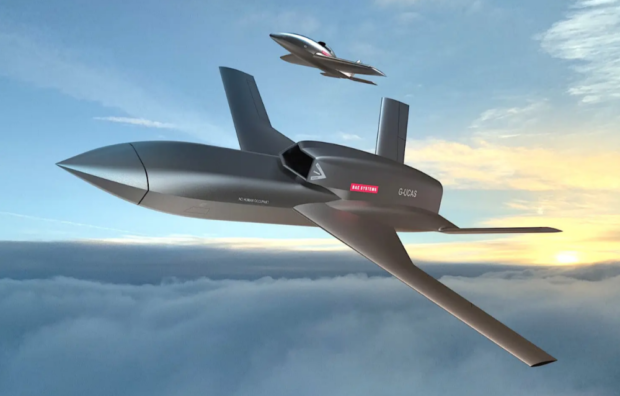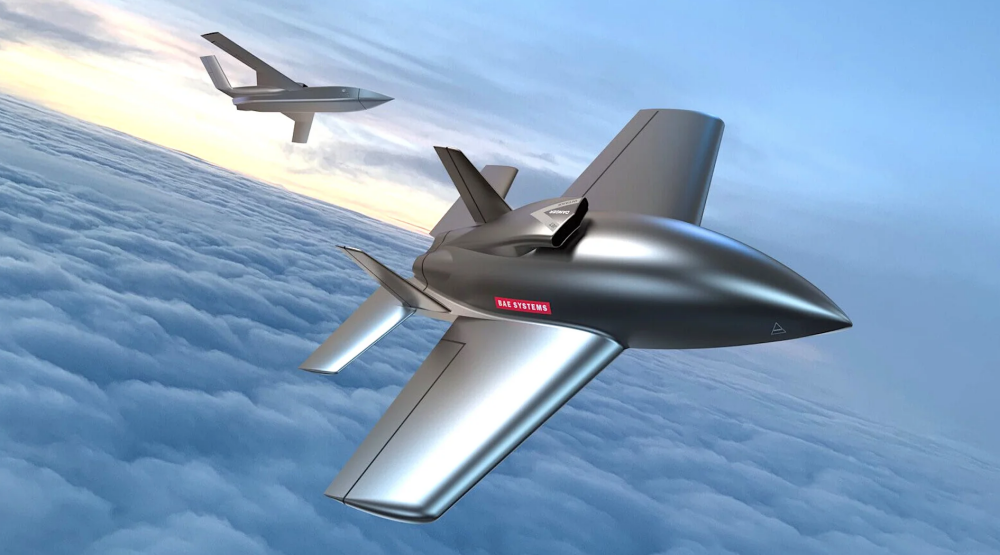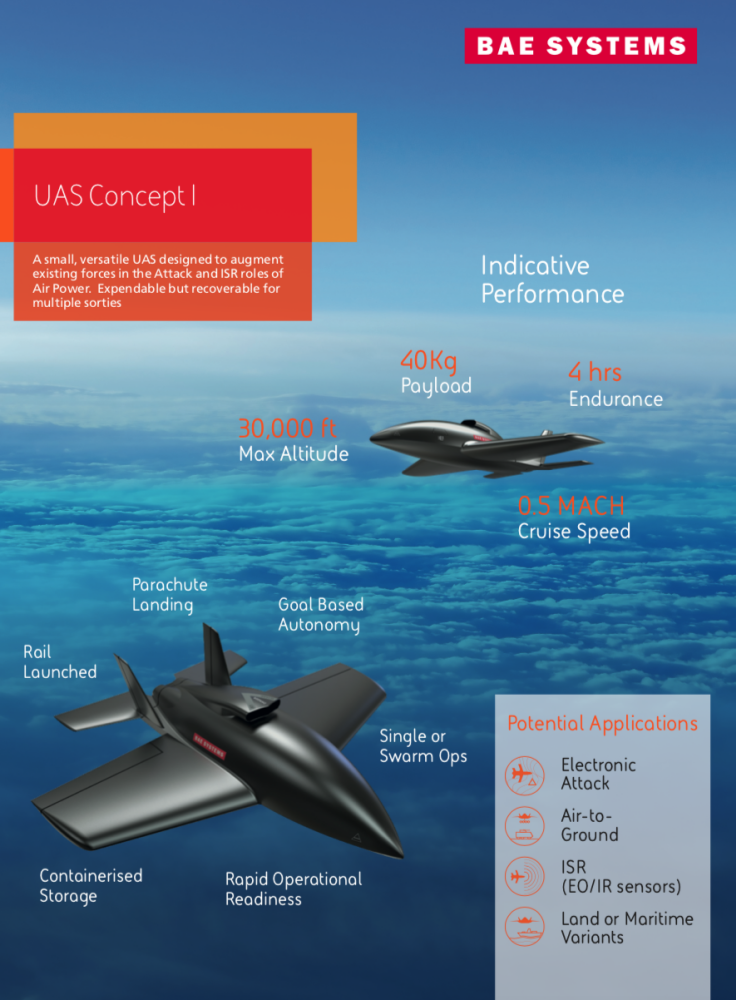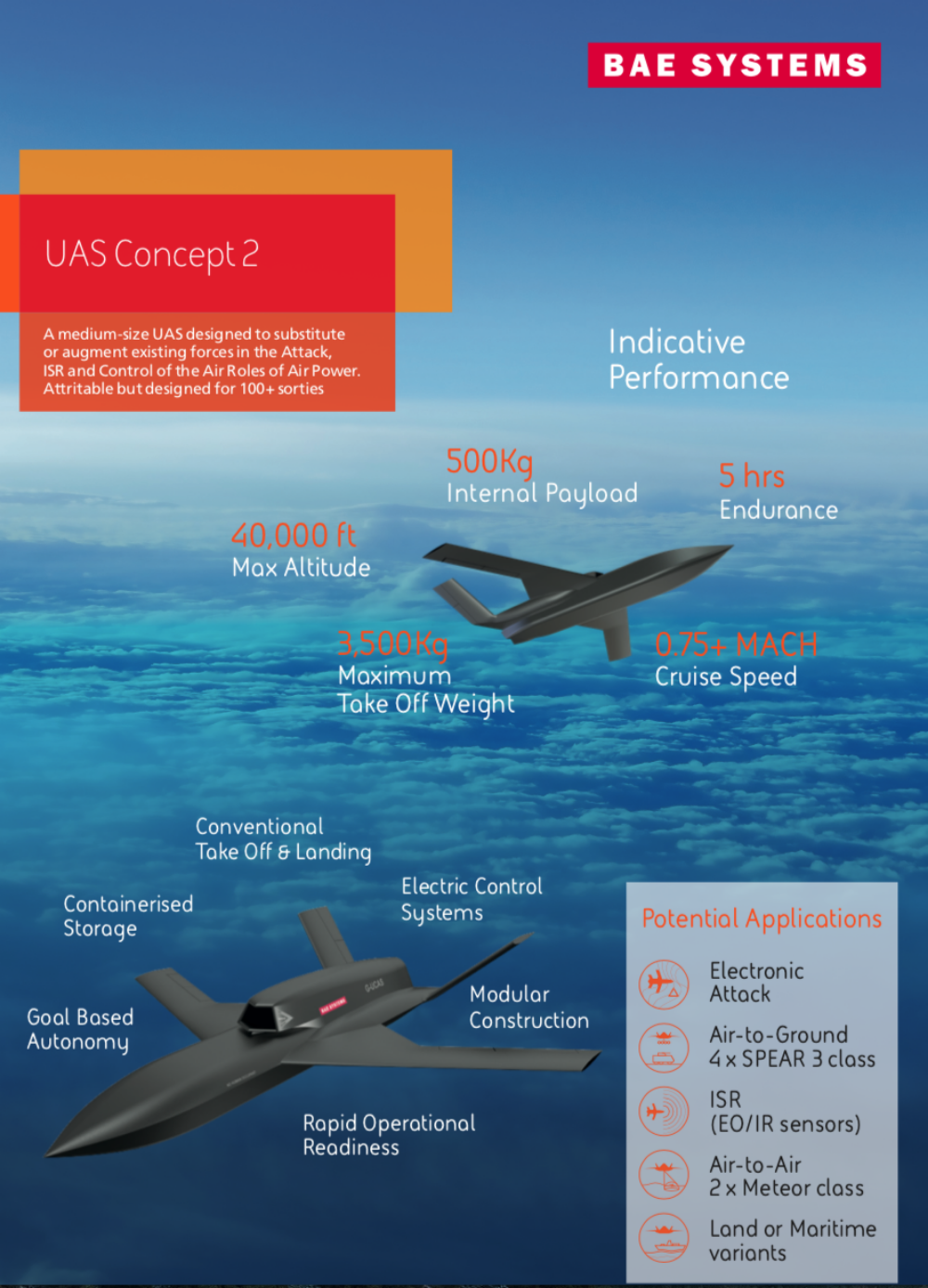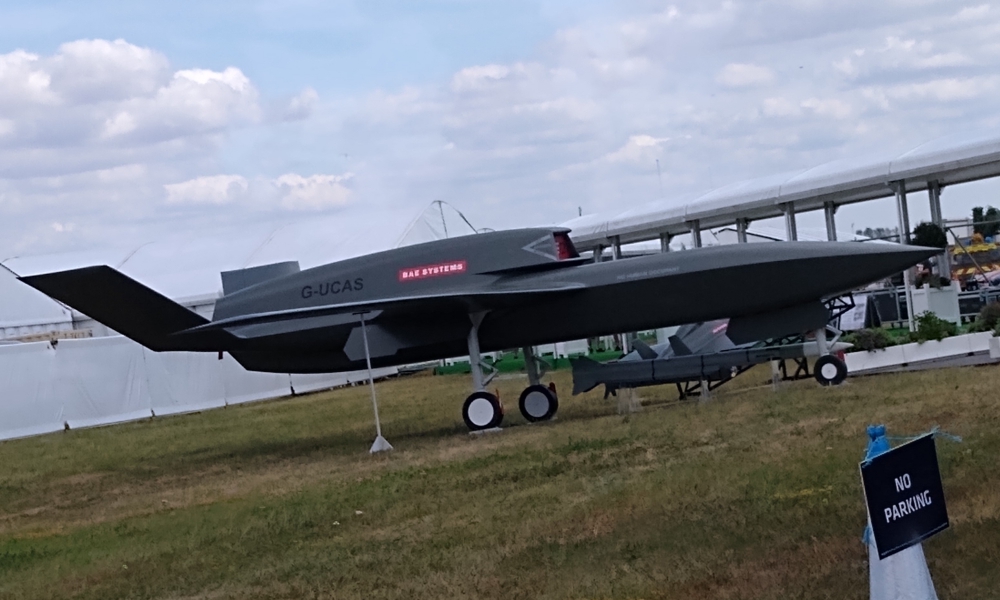BAE Systems has unveiled two new “agile and affordable” unmanned aircraft concepts to meet the demands of a “complex and rapidly evolving battlespace.”
The public debut of these designs follows recent and very open discussions on the part of the U.K. Royal Air Force, including additional details announced just earlier this week, about its new and evolving plans to integrate drones into future operations.
The first of BAE’s newly revealed designs is a relatively small drone capable of operating either individually or as part of a networked swarm, while the second is larger and more in line with various lower-tier unmanned combat air vehicle concepts that other companies have put forward in recent years. Both are intended to be highly modular, allowing them to be configured for various mission sets, including reconnaissance, strike, and electronic warfare, as well as have varying degrees of autonomy.
The two new unmanned designs from BAE made their public debut at this year’s Royal International Air Tattoo, or RIAT, a military air show held at the Royal Air Force’s (RAF) base at Fairford in the United Kingdom. Though RIAT is an annual event, the planned shows in 2020 and 2021 were canceled due to the COVID-19 pandemic.
“Autonomous systems play a key role in that connected, information-rich landscape. The development of agile and affordable new Unmanned Air System (UAS) concepts will provide critical enabling capability in these ever more contested environments,” BAE Systems’ website says. “UAS Concepts being developed within our Air sector offer the potential to enhance the operational effect of current and future crewed platforms, by augmenting the force mix through affordable combat power.”
The two new drone designs are currently unnamed.
What is presently known simply as “Concept 1” is “a small, versatile UAS designed to augment existing forces in the Attack and ISR [intelligence, surveillance, and reconnaissance] roles of Air Power,” according to a product card on BAE’s website, reproduced below. It is intended to be “expendable, but recoverable for multiple sorties.”
The first concept’s general design consists of a central fuselage with a bullet-like shape, two main wings with a very minor sweep, and twin vertical tails. It appears to be jet-powered, with an air intake positioned above the top rear portion of the fuselage.
BAE Systems says this drone will be capable of flying for up to four hours at altitudes up to 30,000 feet and at speeds of up to 0.5 Mach. It should be able to carry payloads weighing up to 40 kilograms (88 pounds), which could include electro-optical or infrared sensor packages, electronic warfare jammers, or unspecified munitions.
Concept 1 is runway independent, being launched from a rail-type catapult and then using a parachute recovery system to ‘land’ after a mission. It will be able to operate singularly or as part of a networked swarm, and will have what BAE calls “goal based autonomy,” the latter capability likely describing ability to carry out specific orders without further direct human interaction. From a logistical standpoint, Concept 1 is also intended to be rapidly deployable utilizing a containerized storage system.
“A medium-size UAS designed to substitute or augment existing forces in the Attack, ISR and Control of the Air Roles of Air Power,” is how a separate product card, seen below, describes Concept 2. It is a more robust design that is still intended to be “attritable, but designed for 100+ sorties.”
The Concept 2 design has a longer, more slender main fuselage compared to Concept 1, along with ‘lambda’-like swept main wings and a splayed v-tail. This unmanned aircraft also looks to be jet powered with a very prominent top-mounted air intake and will take off and land like a traditional airplane.
BAE Systems says the performance targets for the Concept 2 drone – which is shown in the rendering marked with the U.K. civil registration code G-UCAS and stenciling that reads “No Human Occupant” – include a five-hour endurance, the ability to fly up to an altitude of 40,000 feet, and reach a top speed of at least 0.75 Mach. With a maximum takeoff weight of 3,500 kilograms (7,716 pounds), it should be able to carry various payloads, including electro-optical or infrared sensors and electronic warfare suites, and will also feature “goal based autonomy.”
The product card for Concept 2 specifically mentions a possible air-to-air combat loadout consisting of two high-speed Meteor air-to-air missiles or an air-to-ground one with 12 SPEAR-3 mini cruise missiles on four triple launch racks. It’s unclear if the drone will be able to carry any of these munitions internally. Meteor and SPEAR-3 are both products of the European missile consortium MBDA, of which BAE Systems is a part.

